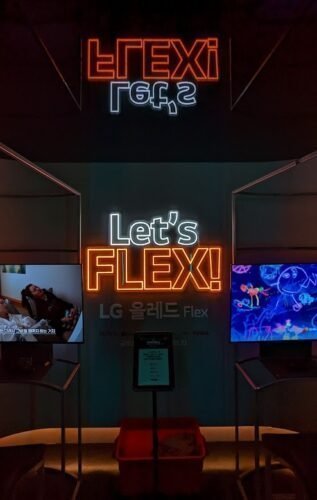Seoul | Curved displays are a must, especially for gamers. But motorized screens with adaptable curvature are new to the market. LG presented the first OLED Flex Displays at the IFA in September. In Seoul invidis was able to test the motorized OLEDs in an LG Flex pop-up store.
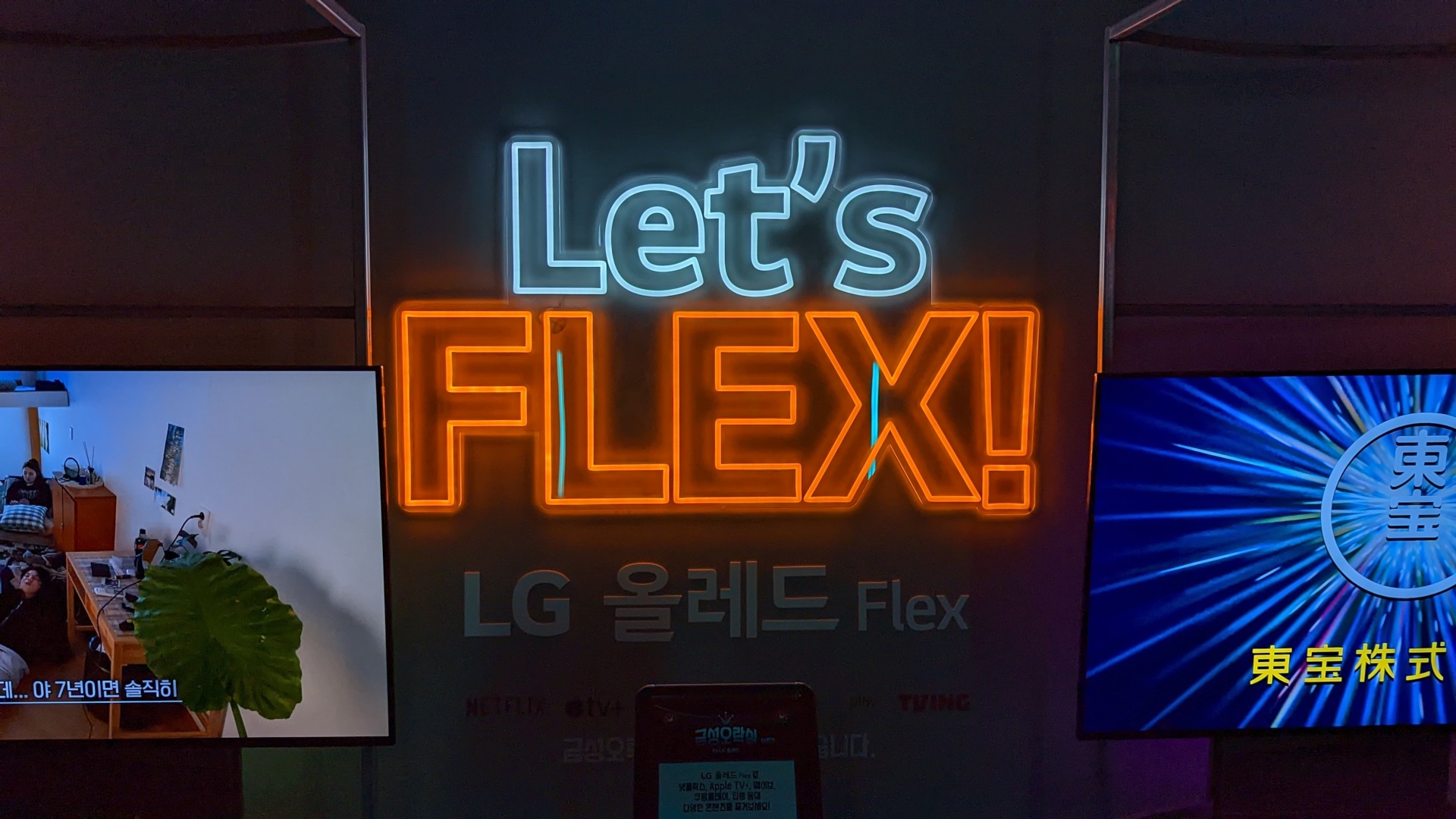
LG Flex: 20 levels of immersiveness
Sometimes coincidence helps – while looking for a special digital signage installation, we discovered an LG Flex pop-up in the heart of Seoul. Without Korean language skills, it wasn’t easy to see what was happening behind the darkened facade. But our curiosity and persistence won out.
Situated in a former gaming hall, LG showcased a computer gamers’ paradise on two floors filled with the latest games and arcade classics. Of course, the latest OLED flex displays were star of the showcase. With a remote control, the curvature of the 42-inch OLED can be adjusted in 20 steps from flat to 900R curvature. LG recommends a high curvature factor for gaming, while the display should be as flat as possible when two people are watching Netflix.
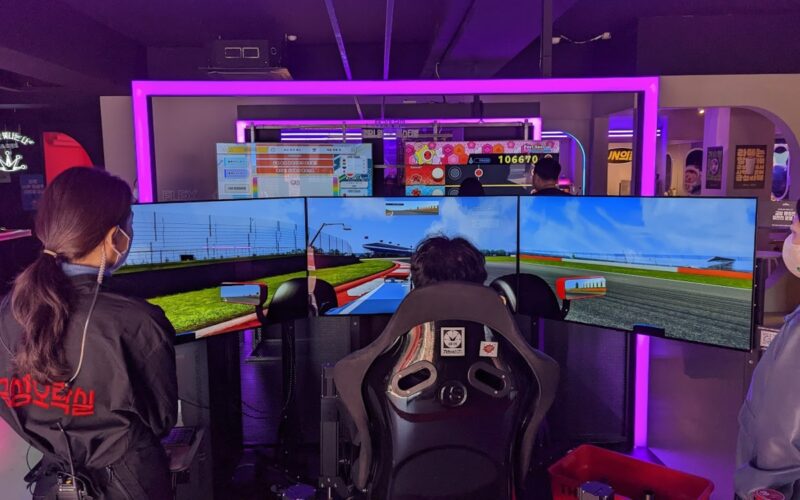
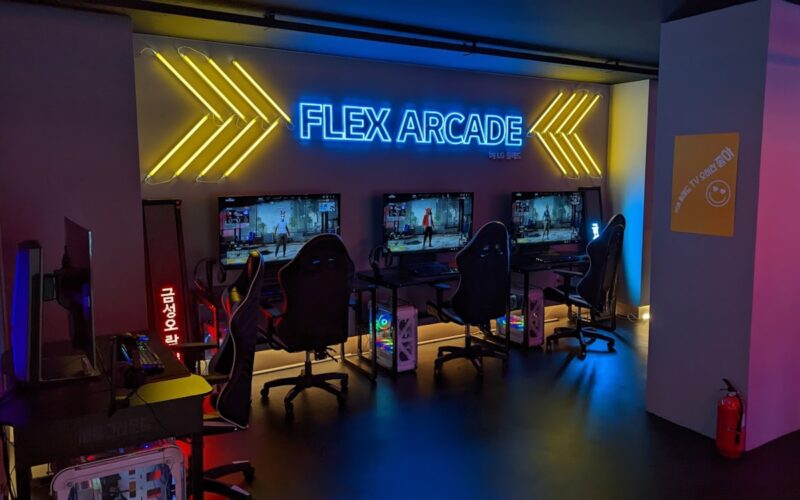
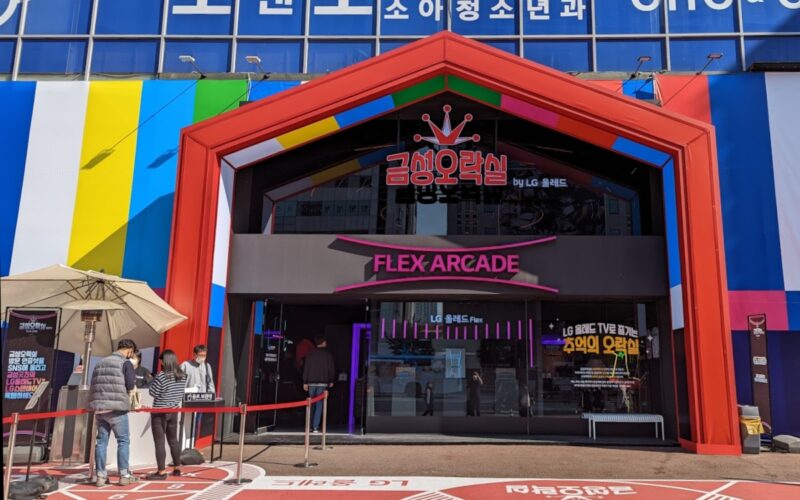
Curved displays certainly weren’t designed for digital signage B2B applications, but perhaps there may be some applications in the future that could benefit from the flexibility. For example, a car configurator information screen could bend for better immersive effects. Motorized screens would also be a possible alternative for interactive kiosks and transactions that require increased privacy. The only digital signage feature (currently) missing is an API through which the degree of curvature could be adjusted using software instead of the remote control.
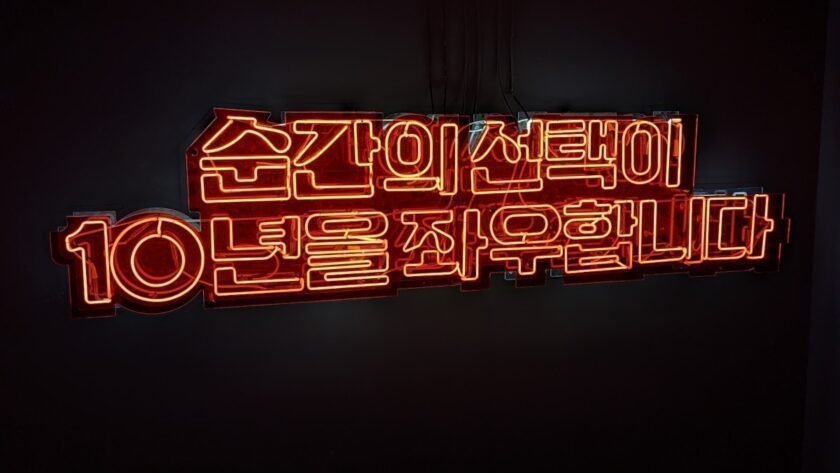
But until LG Flex is available for B2B applications, the dozens of young Koreans around me are focused on one proven curved screen use case: gaming.
